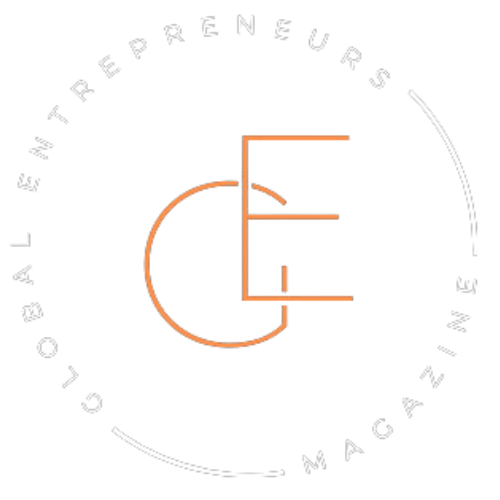You’ve seen it happen.
Some company explodes on social media, raises a mountain of funding, lands on the cover of a magazine—and then, a year later, no one remembers its name. The hype came fast. The exit, even faster.
Now think about the names that don’t need the noise. The ones that didn’t rush the spotlight. They played the long game. They stayed focused when everyone else was chasing trends. And while the hype crowd burned out, they quietly built something that actually lasted.
That’s the real story behind so many of today’s most respected entrepreneurs. They didn’t win because they shouted the loudest. They won because they saw something others didn’t. And they stayed committed to that vision, even when it wasn’t cool, profitable, or celebrated yet.
This isn’t about playing it safe. It’s about playing it smart—long enough to matter.
Let’s talk about what the greats really did differently.
The rush for buzz vs. the patience of vision
A few years ago, a startup called Juicero raised over $100 million to sell a Wi-Fi-connected juicer. It was sleek, well-branded, and backed by major investors. The media couldn’t get enough of it—until someone showed you could squeeze the juice packs with your bare hands. Overnight, it went from Silicon Valley darling to punchline. The hype vanished just as fast as it arrived.
Now compare that to Shopify.
No viral launch. No billion-dollar buzz. Just a small team building tools for online sellers—consistently, quietly, for years. And today? It’s one of the most trusted ecommerce platforms on the planet. No gimmicks. Just focus.
That’s the difference.
Hype rewards speed. Vision rewards consistency.
It’s tempting to chase visibility—especially when everyone’s shouting. But real entrepreneurs don’t sprint for the camera. They build in silence, trusting the work, not the applause. Because they know what matters isn’t how loud you are today. It’s what still holds weight ten years from now.
What real vision looks like (and what it doesn’t)
Vision gets romanticized a lot.
People talk about it like it’s this mystical gift—something you either have or you don’t. But most of the time, vision looks less like a TED Talk and more like a hundred quiet decisions that no one claps for.
It’s not about having the perfect pitch or the catchiest tagline. It’s what guides you when the market shifts, when growth stalls, or when people don’t get what you’re building yet.
Think of Jeff Bezos in the early 2000s. Everyone thought Amazon was just a bookstore. He kept talking about long-term customer value, fast delivery, and infrastructure no one could see yet. Investors weren’t impressed. Critics said he was delusional. He stayed the course anyway.
That’s vision.
It’s stubborn. Sometimes lonely. Often boring to people who don’t see the full picture.
It’s not performative. It’s not reactive. And it definitely doesn’t change every time the wind does.
Real vision is steady. And the best founders build everything around it—even when it means saying no to the flashier, faster path.
Hype fades. Vision compounds.
There’s a reason people still talk about Warren Buffett’s strategies decades later—because compounding works. Not just in money, but in decisions. And vision-led decisions are the ones that quietly stack over time.
Hype makes a lot of noise early on. It gives you headlines, buzzwords, maybe even a spotlight. But it rarely sticks. It burns fast, and usually burns out the people chasing it.
Vision is different.
Take Amazon again. The decision to pour resources into logistics and warehousing wasn’t exciting. It wasn’t flashy. But it compounded. Every delivery that arrived faster, every step in their supply chain that got tighter—it all built on top of itself until it became a moat no competitor could easily cross.
Same thing with companies like Patagonia. Their commitment to sustainability wasn’t a marketing trend. It was a guiding principle. It didn’t just attract attention. It created loyalty. And that loyalty turned into decades of customer retention, advocacy, and respect.
That’s what hype can’t buy. Momentum. Trust. Time.
Vision compounds in ways you don’t always see—until one day, it looks like an overnight success that was actually years in the making.
The temptation to chase trends—and how giants resist it

It’s hard not to get pulled in.
You see a competitor blowing up on TikTok. A new buzzword suddenly floods your feed. A hot new business model starts making rounds in your circles. And for a split second, it feels like you’re falling behind if you don’t jump in too.
But trend-chasing rarely builds anything that lasts.
Entrepreneurs with real staying power know this. They don’t flinch just because the spotlight moves. Instead of scrambling to mimic the next viral thing, they double down on what they believe in—even if it means getting mocked in the short term.
Elon Musk kept pouring resources into SpaceX when most people still saw space exploration as a billionaire’s vanity project. Netflix stuck to streaming even when physical DVDs were still the norm. These weren’t reactive plays. They were bets rooted in conviction, not clout.
The giants know something that hype-chasers forget: trends come and go. But direction matters more than speed.
They’re not afraid to look “off” while everyone else runs the wrong race. Because they’ve got their eyes set on something further out—and they’re patient enough to get there without shortcuts.
When vision feels boring but works anyway
Nobody talks about the in-between years.
The ones where nothing goes viral. Where your growth is slow. Where you’re making the right choices but no one’s clapping. That’s the part most people skip when they glamorize success stories—but it’s also where real vision proves itself.
Think of Costco. No gimmicks. No flashy rebrands. Just a steady, low-margin, high-volume business that’s been profitable for decades. It doesn’t get hyped on LinkedIn, but it quietly earns fierce customer loyalty and billions in revenue.
Or Apple between 2001 and 2007. People forget that after the iPod, Apple went quiet for a while. No big noise, just heads down work. Then the iPhone dropped—and everything changed.
Vision doesn’t always feel bold. Sometimes it feels repetitive. Unseen. Almost dull.
But that’s what makes it powerful. It isn’t constantly looking for a new angle. It’s refining the core, quietly compounding progress while everyone else is chasing sparks.
And when the moment finally comes? The work speaks for itself—louder than any hype cycle ever could.
When vision feels boring but works anyway
Nobody talks about the in-between years.
The ones where nothing goes viral. Where your growth is slow. Where you’re making the right choices but no one’s clapping. That’s the part most people skip when they glamorize success stories—but it’s also where real vision proves itself.
Think of Costco. No gimmicks. No flashy rebrands. Just a steady, low-margin, high-volume business that’s been profitable for decades. It doesn’t get hyped on LinkedIn, but it quietly earns fierce customer loyalty and billions in revenue.
Or Apple between 2001 and 2007. People forget that after the iPod, Apple went quiet for a while. No big noise, just heads down work. Then the iPhone dropped—and everything changed.
Vision doesn’t always feel bold. Sometimes it feels repetitive. Unseen. Almost dull.
But that’s what makes it powerful. It isn’t constantly looking for a new angle. It’s refining the core, quietly compounding progress while everyone else is chasing sparks.
And when the moment finally comes? The work speaks for itself—louder than any hype cycle ever could.
How to tell if you’re building on vision or chasing noise
It’s easy to convince yourself you’re being strategic when you’re really just reacting.
So how do you know the difference?
Start with the questions you’re asking. Are you obsessing over what competitors are doing—or over what your customers actually need? Are you rewriting your roadmap every time a new platform blows up? Do your goals shift based on attention, or do they anchor to something deeper?
When you’re building from vision, decisions feel connected—even when they’re slow. There’s a thread running through your moves. A logic that holds up even when things get hard.
When you’re chasing noise, it’s the opposite. You find yourself switching gears often. You’re tweaking your messaging for clicks, not clarity. You’re building products based on what might get traction—not what fits the long game.
And sometimes the best indicator? How it feels.
Vision doesn’t always come with applause. But it feels solid. Even when no one’s watching, it still makes sense.
Noise? It feels urgent. Unstable. Like you’ll fall behind if you stop moving—even for a second.
You don’t need to have it all figured out. But you do need to know why you’re doing what you’re doing. That’s the difference.
Why hype dies alone, and vision builds teams
Hype might get you attention, but it doesn’t build loyalty.
People can feel it when something’s all show. It attracts quick clicks, not long-term commitment. Investors bail. Employees drift. Customers forget.
Vision, on the other hand, gives people something to believe in. Something to attach themselves to—beyond a paycheck, beyond a trend, beyond a launch cycle.
Think of the teams behind companies like Basecamp or Atlassian. They weren’t built on wild PR stunts. They were built on clarity. A sense of purpose that employees could rally around. A direction that partners could trust. A culture that didn’t need constant reinvention to stay relevant.
People don’t stay because of noise. They stay because of meaning.
And meaning comes from knowing where you’re going.
When a leader has vision, it shows in how they talk, how they plan, how they move. It draws in the kind of people who care about more than the next spike in growth. It builds teams that last—because they’re not just chasing wins. They’re chasing something that matters.
The quiet ones usually win
They’re not the ones trending on launch day.
They’re the ones still standing when the buzz dies down.
The entrepreneurs who build legacy brands don’t waste time chasing noise. They’re busy solving problems. Building trust. Honoring their word—when no one’s watching. While others are chasing spotlight moments, they’re laying brick after brick, often unnoticed.
And then one day, it clicks.
Not because they got lucky. Not because they hacked the algorithm. But because they stayed the course while everyone else got distracted.
Success tends to look loud in hindsight. But in real time, it’s usually quiet. Focused. Steady.
So if your work isn’t making headlines right now, good.
You might be on the right track.




